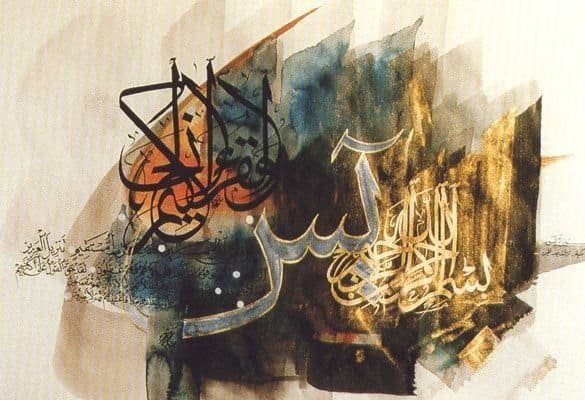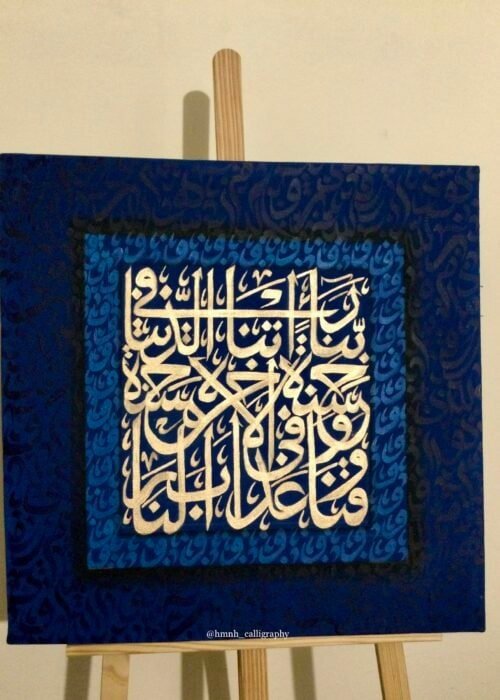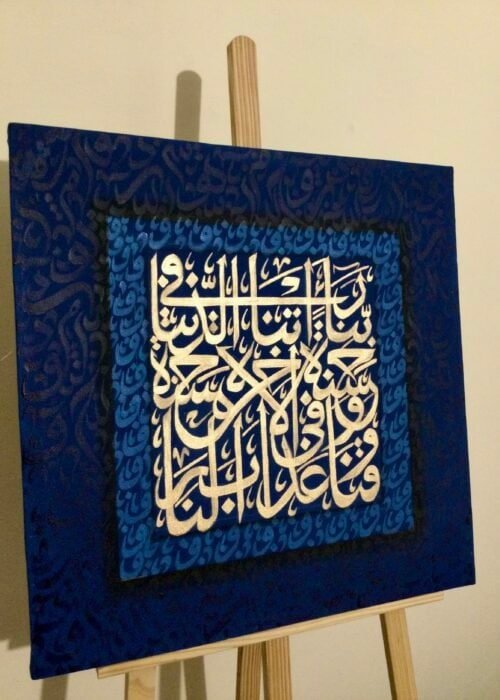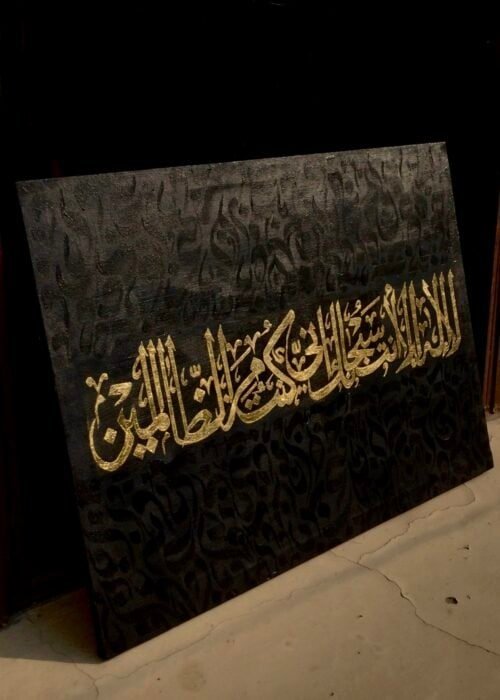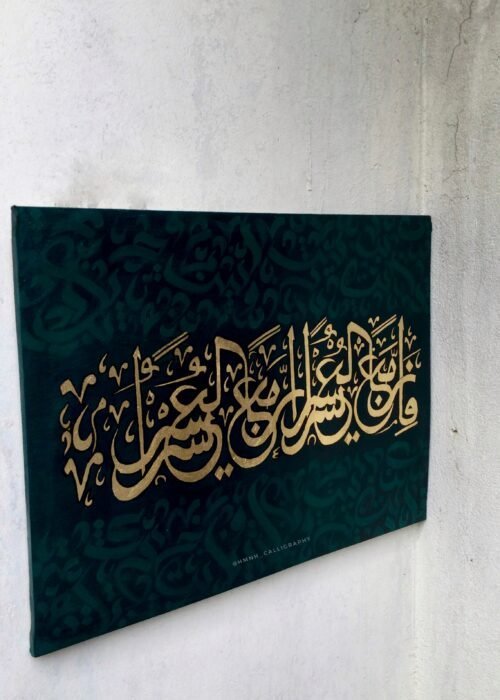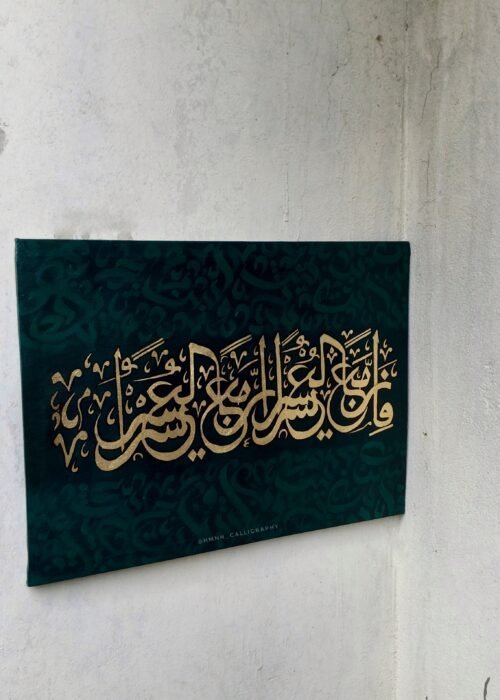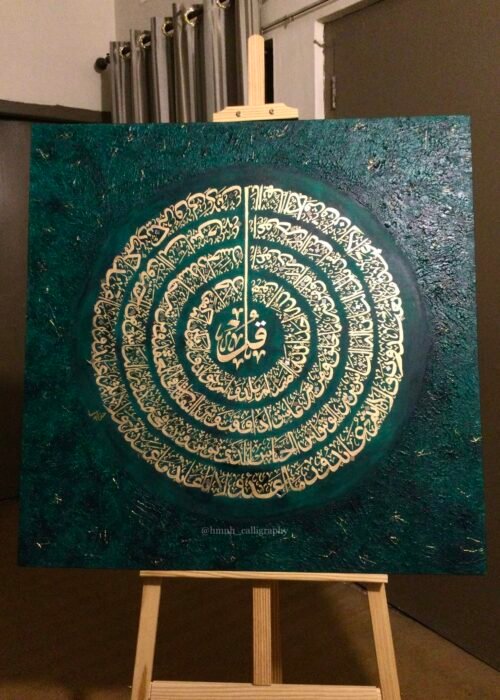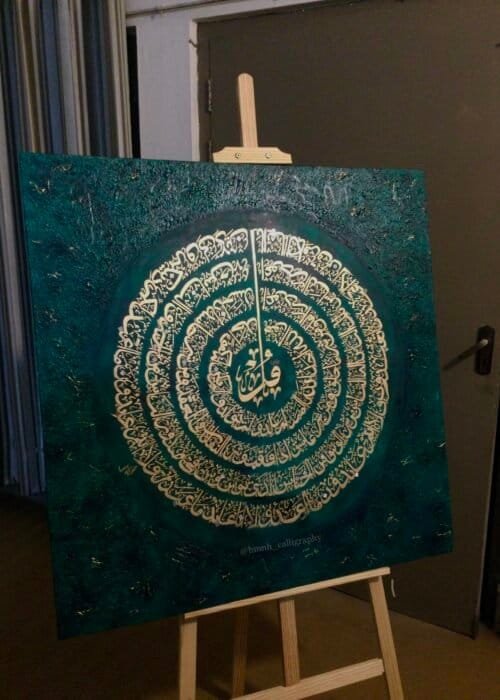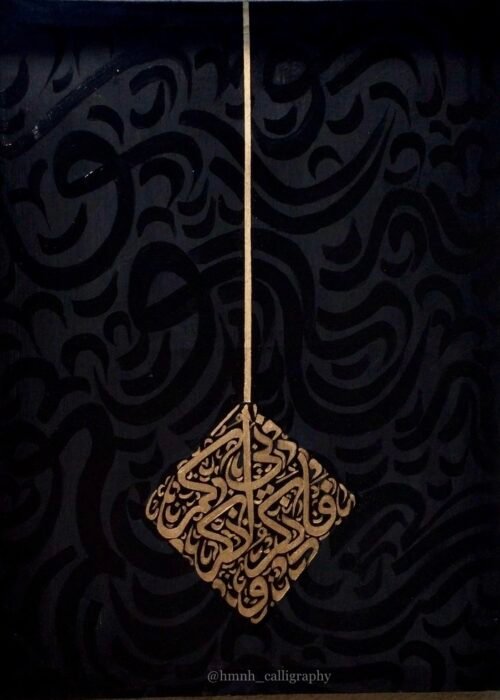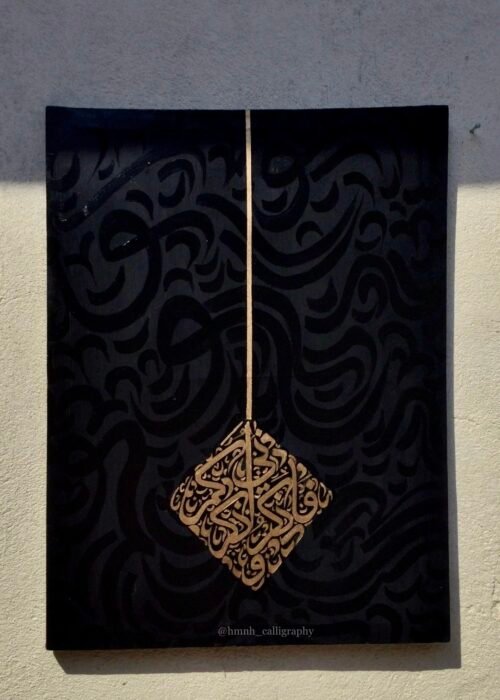Introduction to Islamic Calligraphy
Islamic Calligraphy is one of the most celebrated and revered art forms in the Islamic world. Known as the art of beautiful writing, it goes far beyond simple decoration—it is a spiritual practice that connects believers to the divine word of Allah (SWT). Rooted in the Arabic script of the Holy Qur’an, Islamic Calligraphy represents the harmony between faith, creativity, and cultural heritage.
Unlike other visual arts, Islamic tradition often discouraged figurative representation, especially in religious contexts. This opened the door for calligraphy to flourish as a central artistic expression—transforming written words into masterpieces of geometry, symmetry, and elegance.
Today, Islamic Calligraphy Art is admired across the globe, not only as a spiritual medium but also as a timeless form of design used in mosques, manuscripts, architecture, and modern home décor.
The Origins of Islamic Calligraphy
The roots of Islamic Calligraphy lie in the revelation of the Qur’an. When the words of Allah were revealed to Prophet Muhammad (PBUH), preserving and beautifying the sacred text became a religious duty. Early Muslims developed various scripts to ensure the Qur’an’s transmission remained accurate and visually captivating.
The Kufic script, one of the oldest forms, emerged around the 7th century. Known for its bold and angular style, Kufic was commonly used in early Qur’anic manuscripts and mosque inscriptions. Over time, other refined styles such as Naskh, Thuluth, and Diwani were developed, each carrying its own beauty and application.
Thus, Islamic Calligraphy was never just an art—it became a sacred science, elevating the written word into a symbol of divine connection.
The Spiritual Significance of Islamic Calligraphy
Islamic Calligraphy is deeply spiritual. The words inscribed are often verses from the Qur’an, Hadith, or the names of Allah (Asma-ul-Husna). Writing and viewing these calligraphic pieces serves as an act of remembrance (dhikr), instilling peace, reflection, and mindfulness in the hearts of believers.
For calligraphers, the act of writing is not just craftsmanship—it is a meditative practice. Every stroke, curve, and dot carries a spiritual intention, symbolizing devotion, humility, and gratitude. This is why Islamic Calligraphy is often referred to as “the geometry of the spirit.”
Major Styles of Islamic Calligraphy
Islamic Calligraphy developed into multiple scripts, each suited for different purposes. Below are the most important styles:
1. Kufic Script
- Oldest style of Arabic calligraphy.
- Geometric, angular, and bold.
- Commonly used in early Qur’ans, mosque walls, and architectural inscriptions.
2. Naskh Script
- Elegant, rounded, and easy to read.
- Became the standard for Qur’an writing.
- Still widely used in modern Arabic print.
3. Thuluth Script
- Large, decorative, and curved letters.
- Famous for mosque calligraphy and ornamental works.
- Requires immense skill and precision.
4. Diwani Script
- Developed during the Ottoman era.
- Highly decorative and used for royal decrees.
- Features intricate flourishes and hidden meanings.
5. Ruq’ah Script
- Simple and practical.
- Used in everyday writing.
- Modern handwriting in the Arab world.
6. Modern Calligraphy Styles
- Contemporary artists mix traditional scripts with modern art.
- Includes Calligraffiti—a fusion of calligraphy and street art.
Islamic Calligraphy in Architecture
One of the most breathtaking applications of Islamic Calligraphy is in architecture. From the Alhambra in Spain to the Blue Mosque in Istanbul, sacred verses are inscribed on walls, domes, and arches, creating spaces that resonate with both beauty and spirituality.
Some famous examples include:
- The Dome of the Rock (Jerusalem): Features Kufic inscriptions of Qur’anic verses.
- Taj Mahal (India): Adorned with Thuluth script in white marble.
- Sultan Ahmed Mosque (Turkey): Showcases exquisite Thuluth inscriptions on its interior.
By integrating calligraphy into architecture, Islamic civilization turned spaces of worship into visual sermons, reminding worshippers of the presence of Allah at every glance.
The Role of Islamic Calligraphy in Manuscripts
Before the printing press, every Qur’an was handwritten by skilled calligraphers. These manuscripts were works of devotion, often accompanied by illumination—gold and color embellishments around the script.
The art of manuscript calligraphy also extended to:
- Poetry collections
- Historical records
- Scientific works
These manuscripts not only preserved Islamic knowledge but also elevated it through artistry. Today, many of these works are preserved in museums and libraries, admired for their sacred and historical significance.
Islamic Calligraphy in Modern Times
Islamic Calligraphy continues to inspire contemporary artists worldwide. From digital calligraphy designs to home décor art pieces, the practice has evolved while staying true to its spiritual essence.
Modern applications include:
- Wall art & paintings for homes and mosques.
- Fashion & textiles featuring calligraphy designs.
- Digital typography for Islamic websites and apps.
- Calligraffiti as a medium of self-expression.
This modern revival has helped bring Islamic Calligraphy to a global audience, where both Muslims and non-Muslims appreciate its elegance and meaning.
Tools & Materials Used in Islamic Calligraphy
Islamic Calligraphy requires precision, and traditional tools are carefully chosen:
- Qalam (Reed Pen): Cut at an angle to create varying strokes.
- Ink: Traditionally handmade, ensuring richness and durability.
- Paper & Parchment: Specially prepared surfaces for smooth writing.
- Gold Leaf & Illumination: Used to decorate manuscripts and art pieces.
Even in modern calligraphy, digital pens and software mimic these tools while maintaining the beauty of the original strokes.
Learning the Art of Islamic Calligraphy
For centuries, calligraphy was taught through apprenticeship under master calligraphers. The training involved years of practice, learning to perfect strokes and letters.
Today, learners can explore Islamic Calligraphy through:
- Workshops & online courses
- Calligraphy studios
- YouTube tutorials and digital guides
- University programs in Islamic Art
Practicing calligraphy requires patience, dedication, and a deep respect for the sacred words being inscribed.
The Global Influence of Islamic Calligraphy
While rooted in Islamic tradition, calligraphy has influenced and inspired global art movements. In Europe, Islamic manuscripts inspired Renaissance calligraphy. In modern times, artists like eL Seed blend Arabic calligraphy with street art, creating powerful cross-cultural dialogues.
Islamic Calligraphy has become a bridge between cultures, symbolizing peace, spirituality, and universal beauty.
How to Use Islamic Calligraphy in Home & Lifestyle
Many people today decorate their homes with Islamic Calligraphy as a source of inspiration and blessing. Popular choices include:
- Shahada Calligraphy
- Ayat-ul-Kursi (Verse of the Throne)
- Bismillah Calligraphy
- 99 Names of Allah
- Surah Ikhlas, Falaq, and Naas
These artworks bring a sense of serenity, faith, and beauty to any living space.
